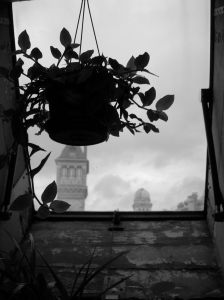The private cab company, Pink Taxi, was backed by the Mexican government late last year in an attempt to help women feel safer taking cabs. And a lot of feedback has been positive. A 17-year-old student named Melissa Ayala said in an interview, "Mexico is going through a difficult time; insecurity is part of our lives. The fact that these taxis can be found outside nightclubs makes our parents more comfortable. It was the first time I sat back and relaxed in a cab." Twenty-one-year-old passenger Joss Roco agreed with the need for harassment-free transportation, stating, "It's uncomfortable to ride with a man who looks at you like a sex object just because you're wearing a skirt; I felt calm and confident being driven by a woman."
In addition to making women feel secure hopping in a cab, the service has helped empower spades of women drivers by opening employment opportunities and dispelling stereotypes in this machismo-driven culture that women can't drive or fix their vehicles. Rocio Nava, one of Pink Taxis' 60 drivers, said that her training included 180 hours of defensive driving, self-defense, and basic mechanics.
Still, for all the praise the women-only taxis have gotten, feedback isn't always all roses. For one thing, many are galled by the chosen color, vibrant pink, and state that the fact that each cab is equipped with GPS and a make-up kit does more to cement negative connotations of women rather that help them.
Despite all this, women-only taxis only seem to becoming more popular, not less so. Puebla intends to expand its fleet to 300 cabs, and similar services have cropped up in locations as far away as Lebanon and Moscow. And women seem to be responding. Ayala said, "I was eager to use Pink Taxi not only because it's safer, but also as a way to support other women who are trying to improve their economic situation."
- Follow us on Twitter: @inthefray
- Comment on stories or like us on Facebook
- Subscribe to our free email newsletter
- Send us your writing, photography, or artwork
- Republish our Creative Commons-licensed content

